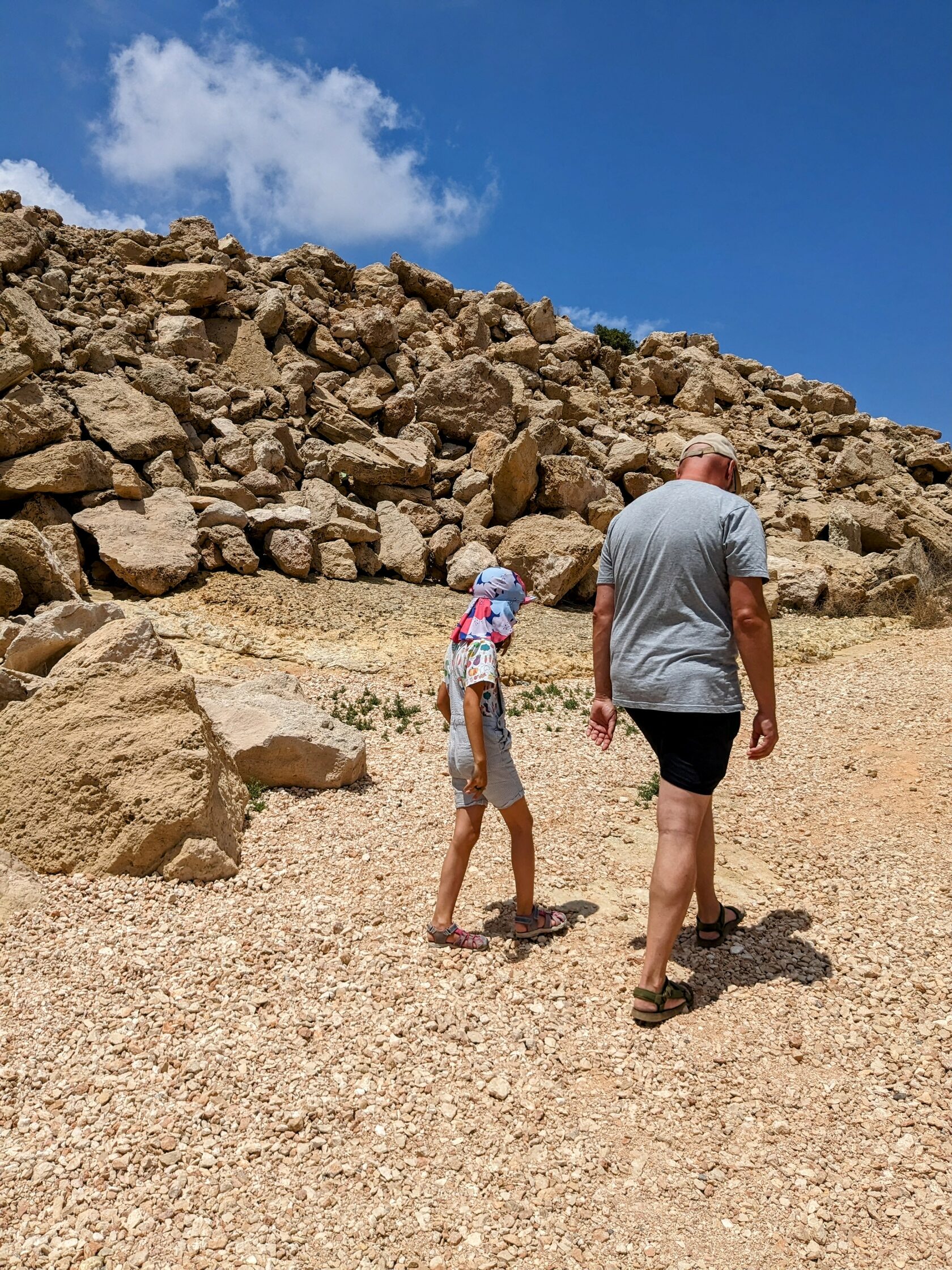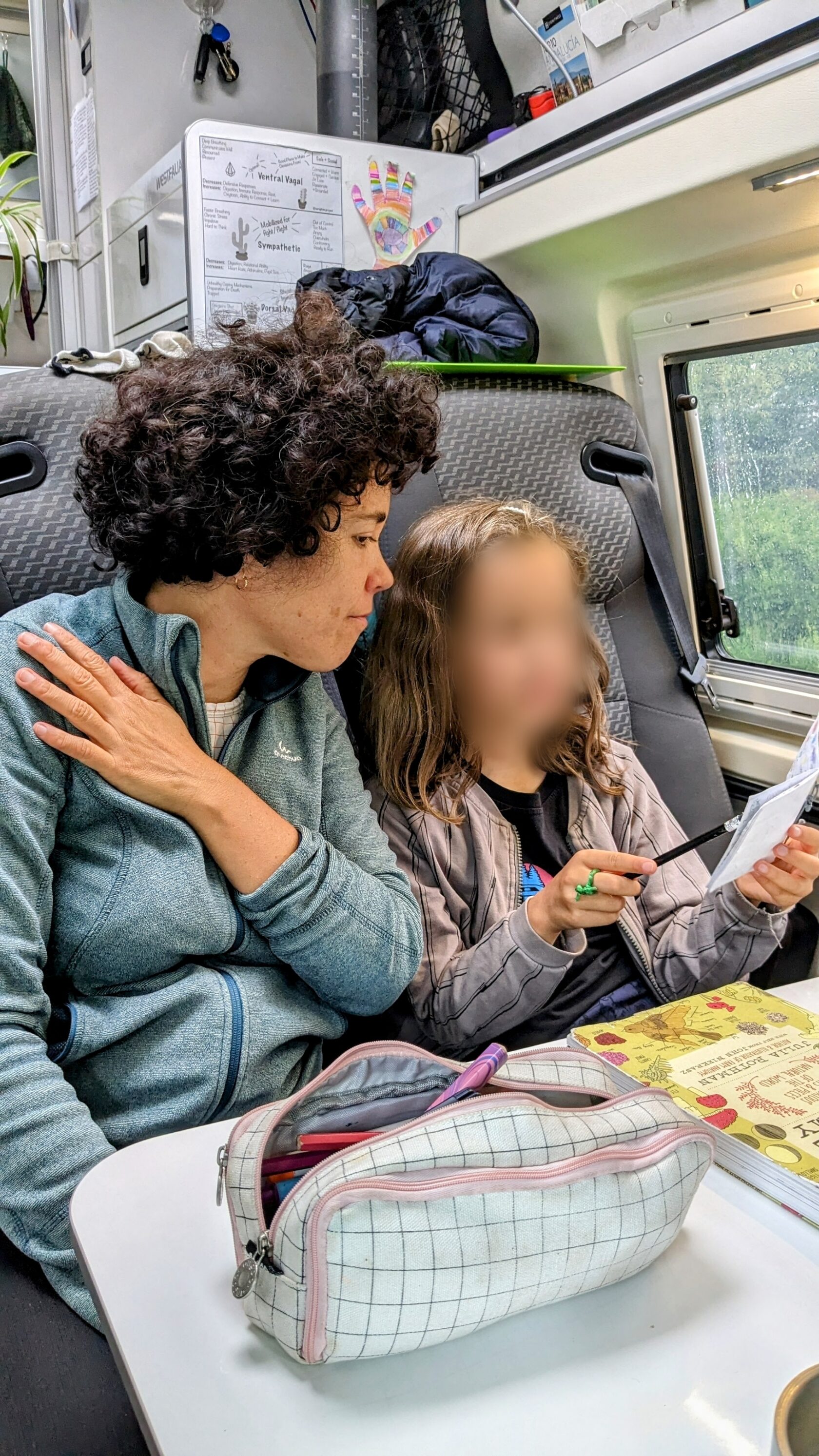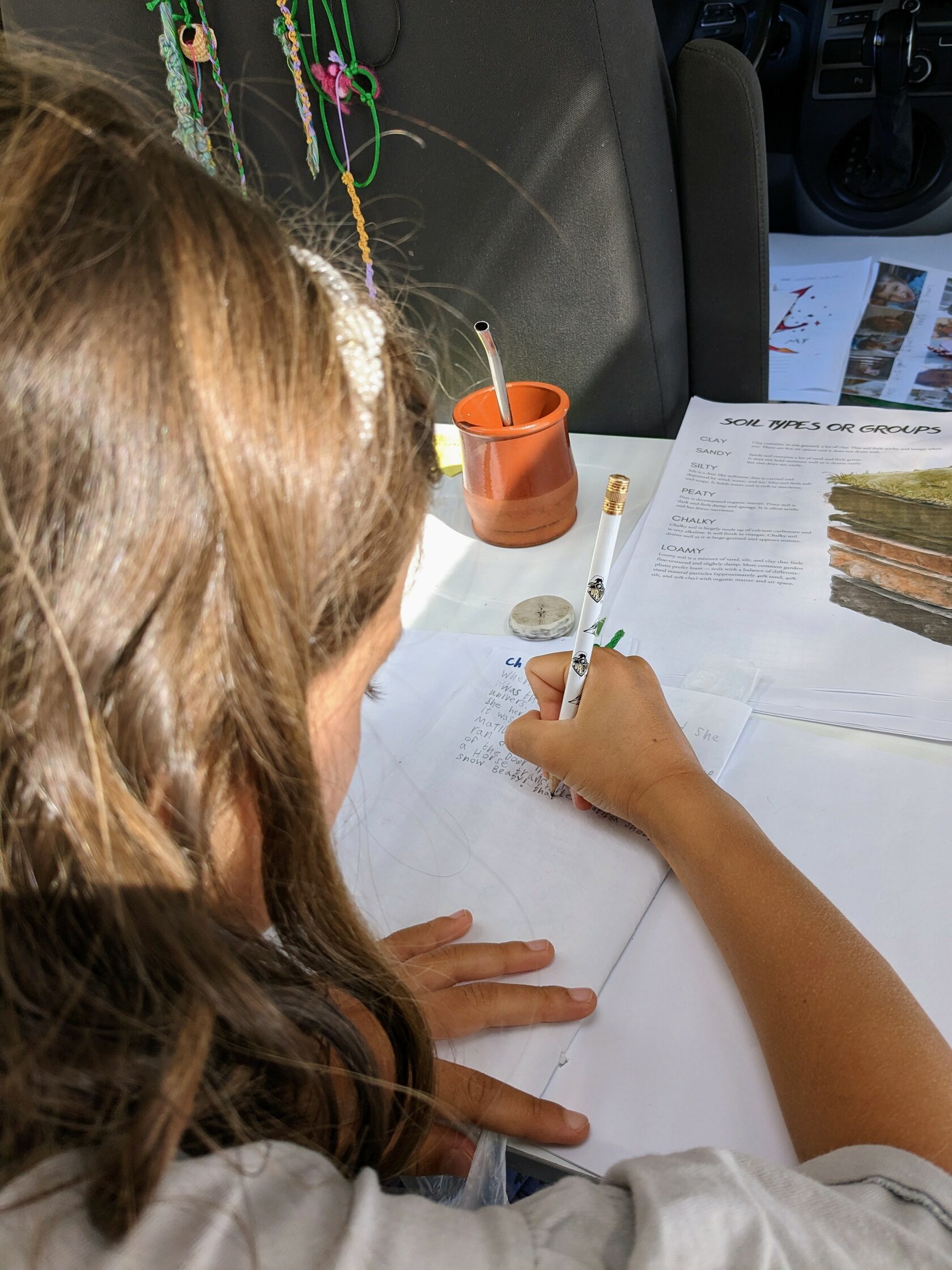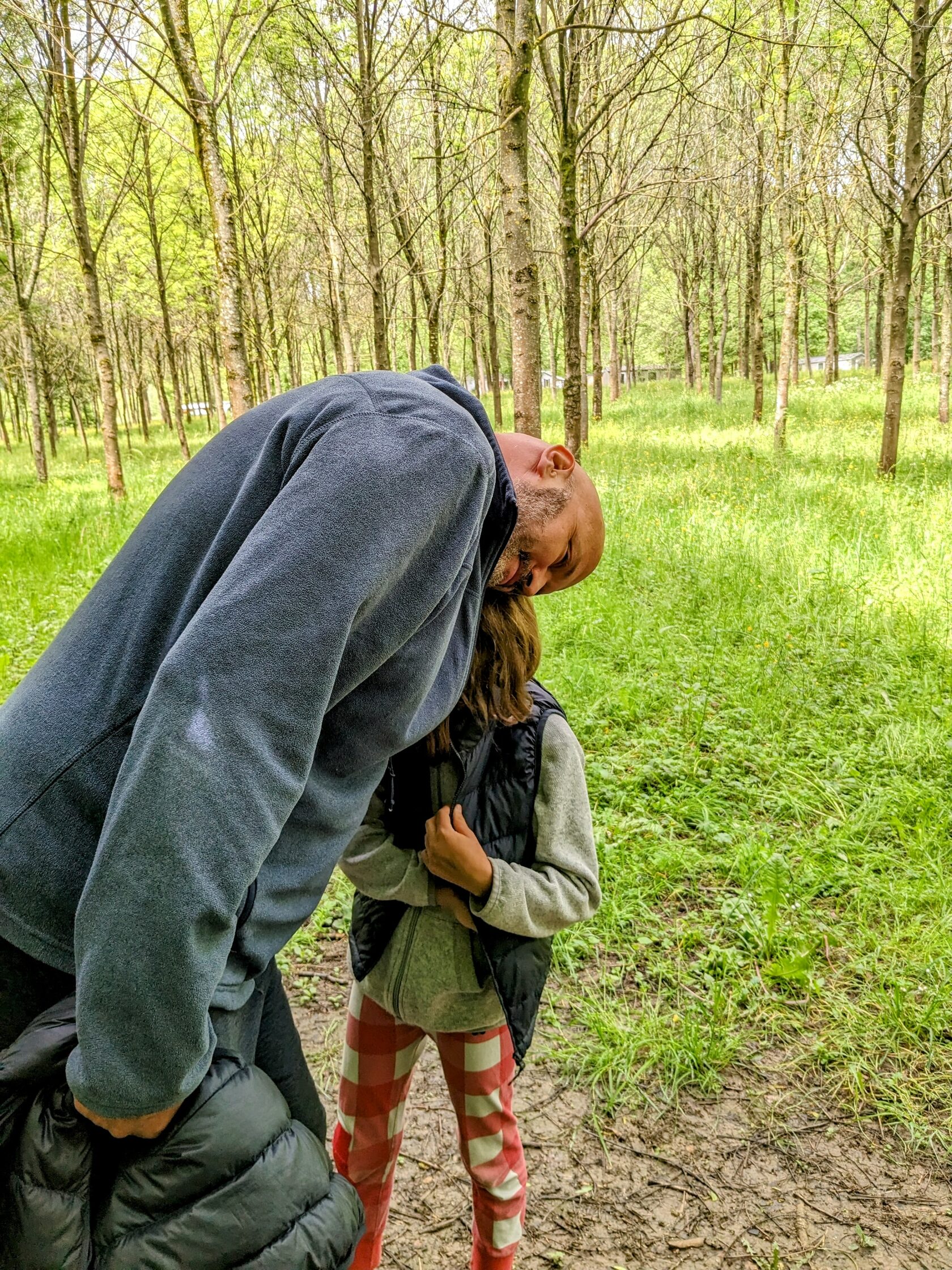We often fear setting boundaries will interfere with our children's autonomy and creativity. Setting boundaries in an unschooling environment is not about control or restriction, it's about creating a safe and supportive space for our children that fosters growth, self-expression, and a strong parent-child relationship. Boundaries provide children with a sense of predictability and consistency, which helps them understand their environment and develop trust in the adults around them. By setting boundaries in a caring and confident way, we help our children develop self-awareness, self-control, and a sense of responsibility. We provide a structure that supports our children's sense of safety and allows them to explore the world around them without fear. In addition, by respecting their boundaries, we show our children that we value their emotions, feelings, and opinions.

Crafting Dynamic Boundaries: Six Evolving Approaches to Nurture Our Children's Flourishing Journey
In order to put boundaries into practice regularly, we need to be mindful and intentional in our interactions with our children. At the same time, we need to be open and willing to adjust to them as our children grow and change. Thus, I have compiled these six approaches because I believe they provide a good foundation to work from:
- Model healthy boundary-setting behaviors. We can set an example for our children by setting healthy boundaries in our own lives, such as saying no to requests that don't align with our values or taking time for self-care.
- Encourage open communication. We can offer our children a space where they can express their feelings and opinions openly without judgment and criticism. This fosters a sense of trust and understanding, which is necessary for setting healthy boundaries.
- Practice active listening. We need to practice listening actively to our children's needs, concerns, and opinions without judgment or interruption, and validate their points of view and perspectives.

- Involve children in setting boundaries. We can ask for their input and make sure they understand why specific boundaries are being placed. We need to encourage them to identify what makes them feel uncomfortable or threatened and help them set appropriate boundaries in those situations. This way, children can feel heard and understood, which helps them internalize the importance of boundary-setting.
- Foster respect for others' boundaries. We need to teach children to respect other people’s boundaries and reinforce that everyone has a right to set boundaries for themselves.
- Practice assertive communication. We need to practice with our children the use of assertive communication to express their needs and boundaries in a clear and respectful manner.

Charting a Compassionate Course: Six Empowering Ways We Set Boundaries for Flourishing Young Minds
Setting boundaries in a caring, non-judgmental, and confident way is crucial for supporting our children's development.
- Use "I" statements: When setting boundaries, use "I" statements to communicate how the behavior makes you feel. For example, "I feel uncomfortable when you speak to me that way."
- Offer alternatives: Instead of simply saying no, offer alternatives that align with your values and needs. For example, “I see that you would like to start drawing that picture right now. It seems like an activity you will enjoy very much. What we can do is finish this part of the project. Then you may continue with the drawing”.
- Reinforce the importance of self-respect: Explain the reason behind the boundary, using age-appropriate language and showing empathy for the child's perspective. For example, “I know that X is not one of your favorite subjects because you are more passionate about doing X. We also know that we need to work on the things we have to improve, too. I noticed that we haven’t yet organized a project for X this week. How about you choose between these two days when you would like to do it?”

- Validate their emotions: Acknowledge your children's feelings and let them know that you understand why they might be feeling a certain way. For example, “I see that you’re building a bridge and you’re trying very hard to join the two ends and it’s not working yet. Things like that can be frustrating and we can lose our patience. I’ll sit down beside you and keep you company. If you need me, 'I’m right here”.
- Be patient: Children need time to learn and adjust to new boundaries, so be patient with them as they develop these crucial life skills. For example, “I understand that your audiobook is in the most exciting part and that right now you’re mad because you can’t listen to it at the moment. Some rules are harder to process than others.” After giving the child some time to process and calm down, we can add, “In the evening, before you go to bed, you can listen to your audiobook for 20 minutes if you like”.
- Introduce and practice problem-solving skills: children are capable of reflecting on their experiences and feelings, so we need to give them the opportunity and offer them the space to do it. Start by helping them develop strategies to cope with challenges and conflicts in a constructive way, such as in the example below.
Embracing the Storm: Navigating Your Child's Emotional Outburst with Compassion and Growth
Your child loses it during a project and starts shouting at you and throwing things around. Our reaction to the situation is:
“I see that you are struggling with this project and that’s why you started shouting at me and throwing things around. I imagine you felt desperate and powerless. You have tried different options and you cannot YET connect point A with points B and C”.
Give the child a moment to calm down and reflect upon what you just shared with them.
When they have calmed down, ask them:
“You couldn’t control your reactions toward the situation, right?”
“Yes, I’ve tried many times, and I still can’t see/understand it!”
“I get where you’re coming from and what it feels like when that happens, but I will not let you shout at me”.
Give your child a moment to process their feelings and ask them how they feel. Afterward, ask them:
”Yes, you are right. I can see that the project is hard. Does it feel really hard or just a little hard?
“It feels…[depending on the child, answers will vary here]”
“What do you think you could do to help yourself?”
“I could…[depending on the child, answers will vary here]”
“If you think I can help, what type of help do you need?”
“(The child will come up with an idea or a suggestion)”.
After the child finishes with the explanation, you can go on to tell them: “Sometimes things can feel HARD, and when we take a moment to pause and regroup, it doesn’t feel as hard anymore”.
“I see that you are struggling with this project and that’s why you started shouting at me and throwing things around. I imagine you felt desperate and powerless. You have tried different options and you cannot YET connect point A with points B and C”.
Give the child a moment to calm down and reflect upon what you just shared with them.
When they have calmed down, ask them:
“You couldn’t control your reactions toward the situation, right?”
“Yes, I’ve tried many times, and I still can’t see/understand it!”
“I get where you’re coming from and what it feels like when that happens, but I will not let you shout at me”.
Give your child a moment to process their feelings and ask them how they feel. Afterward, ask them:
”Yes, you are right. I can see that the project is hard. Does it feel really hard or just a little hard?
“It feels…[depending on the child, answers will vary here]”
“What do you think you could do to help yourself?”
“I could…[depending on the child, answers will vary here]”
“If you think I can help, what type of help do you need?”
“(The child will come up with an idea or a suggestion)”.
After the child finishes with the explanation, you can go on to tell them: “Sometimes things can feel HARD, and when we take a moment to pause and regroup, it doesn’t feel as hard anymore”.
In this way, children learn how to communicate their feelings and at the same time practice problem-solving skills. They learn to think of and foresee problems, as well as come up with solutions and execute them before the situation escalates and gets out of their hands.

When we look around us and establish what kind of bonds we want our family to develop with others, we agree that setting boundaries is crucial for our children’s growth and development. Setting boundaries can help them develop a sense of confidence, or trust in their ability to function in any given environment, and begin to understand what it requires to balance structure, respect, responsibility, and empathy toward others. It is an approach that fosters secure attachment, providing children with a supportive and nurturing environment in which they can participate in a diverse variety of interactions with people while remaining responsible and thoughtful of their own actions and reactions. Ultimately, setting boundaries is an essential part of our role as parents, supporting our children to become curious, confident, and compassionate individuals.
